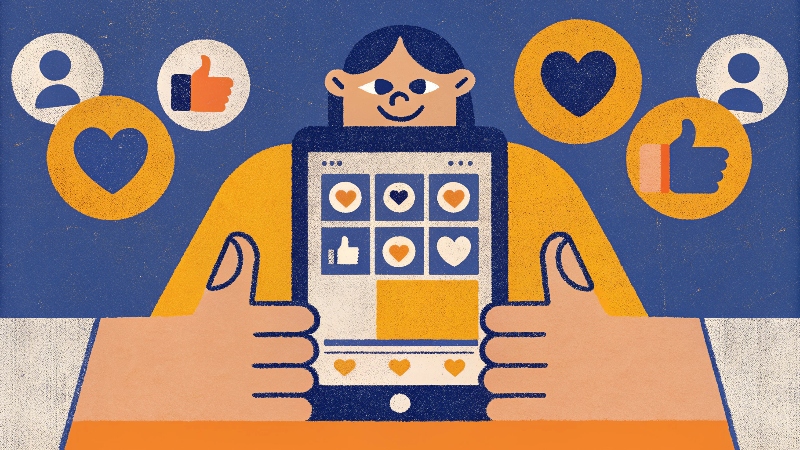
Average Conversion Rates in Social Media Marketing
In the rapidly evolving landscape of digital marketing, social media marketing (SMM) has emerged as a pivotal strategy for businesses aiming to enhance their online presence and drive conversions. With billions of active users across various social media platforms, the potential to reach and engage target audiences is immense. However, understanding the average conversion rate for social media marketing is crucial for businesses to gauge the effectiveness of their campaigns and optimize their strategies accordingly.
What is Conversion Rate in Social Media Marketing?
Conversion rate in the context of social media marketing refers to the percentage of users who take a desired action after interacting with a social media post or ad. This action could be anything from making a purchase, signing up for a newsletter, downloading a whitepaper, or simply visiting a website. The conversion rate is a key performance indicator (KPI) that helps businesses measure the success of their SMM efforts.
Average Conversion Rates Across Social Media Platforms
The average conversion rate for social media marketing varies significantly across different platforms. According to recent studies, the average conversion rates are as follows:
Facebook: Facebook remains one of the most popular platforms for SMM, with an average conversion rate of around 2-3%. However, this rate can vary depending on the industry, target audience, and the specific goals of the campaign.
Instagram: With its visually appealing content format, Instagram has become a favorite among businesses looking to engage younger audiences. The average conversion rate on Instagram is slightly higher than Facebook, ranging from 3-4%.
Twitter: Twitter’s fast-paced nature and character limit make it a unique platform for SMM. The average conversion rate on Twitter is lower compared to Facebook and Instagram, typically around 1-2%.
LinkedIn: As a professional networking platform, LinkedIn is ideal for B2B marketing. The average conversion rate on LinkedIn is higher than Twitter but lower than Facebook and Instagram, ranging from 2-3%.
Pinterest: Pinterest is a visual discovery platform that is particularly popular among users looking for inspiration and ideas. The average conversion rate on Pinterest is relatively high, ranging from 3-5%.
It’s important to note that these are average figures, and the actual conversion rates can vary significantly based on various factors such as industry, target audience, content quality, and campaign objectives.
Factors Influencing Conversion Rates in Social Media Marketing
Several factors can influence the conversion rates in social media marketing. Understanding these factors can help businesses optimize their campaigns for better results:
Target Audience: Identifying and targeting the right audience is crucial for achieving higher conversion rates. Businesses need to understand their target audience’s demographics, interests, and behaviors to create content that resonates with them.
Content Quality: The quality of content plays a significant role in driving conversions. High-quality, engaging content that provides value to the audience is more likely to lead to conversions.
Call to Action (CTA): A clear and compelling CTA can significantly impact conversion rates. Businesses should use action-oriented language and place CTAs prominently in their social media posts.
Landing Page Experience: The landing page experience is crucial for converting social media traffic into leads or customers. A well-designed, mobile-friendly landing page with relevant content and a clear value proposition can improve conversion rates.
Ad Relevance and Targeting: The relevance of ads to the target audience and the accuracy of targeting parameters can impact conversion rates. Businesses should use platform-specific targeting options to reach the right audience with relevant ads.
Timing and Frequency: The timing and frequency of social media posts and ads can affect conversion rates. Businesses should consider the optimal times to post and the frequency that maximizes engagement without overwhelming the audience.
Platform-Specific Features: Each social media platform has unique features and capabilities that can be leveraged to improve conversion rates. For example, Instagram’s Stories and Reels can be used to engage users and drive conversions.
Strategies for Improving Conversion Rates in Social Media Marketing
To improve conversion rates in social media marketing, businesses can implement the following strategies:
Audience Segmentation: Segmenting the target audience based on demographics, interests, and behaviors can help businesses create more targeted and relevant content.
A/B Testing: Conducting A/B tests on different elements of social media campaigns, such as ad creatives, CTAs, and landing pages, can help identify the most effective strategies for driving conversions.
Engagement and Interaction: Engaging with the audience through comments, messages, and other forms of interaction can build trust and credibility, leading to higher conversion rates.
Use of Visuals: Visual content, such as images and videos, is more engaging than text-based content. Using high-quality visuals can help capture the audience’s attention and drive conversions.
Leveraging Influencers: Collaborating with influencers who have a strong following in the target audience can help amplify the reach and impact of social media campaigns, leading to higher conversions.
Tracking and Analytics: Tracking the performance of social media campaigns using analytics tools can provide valuable insights into what works and what doesn’t. Businesses can use these insights to optimize their strategies and improve conversion rates.
Integration with Other Marketing Channels: Integrating social media marketing with other marketing channels, such as email marketing and SEO, can create a cohesive marketing strategy that drives conversions across multiple touchpoints.
Understanding the average conversion rate for social media marketing and the factors that influence it is crucial for businesses looking to maximize the effectiveness of their SMM campaigns. By implementing strategies such as audience segmentation, A/B testing, engagement, and integration with other marketing channels, businesses can improve their conversion rates and achieve better ROI from their social media marketing efforts. As the digital landscape continues to evolve, staying informed about the latest trends and best practices in SMM is essential for maintaining a competitive edge.